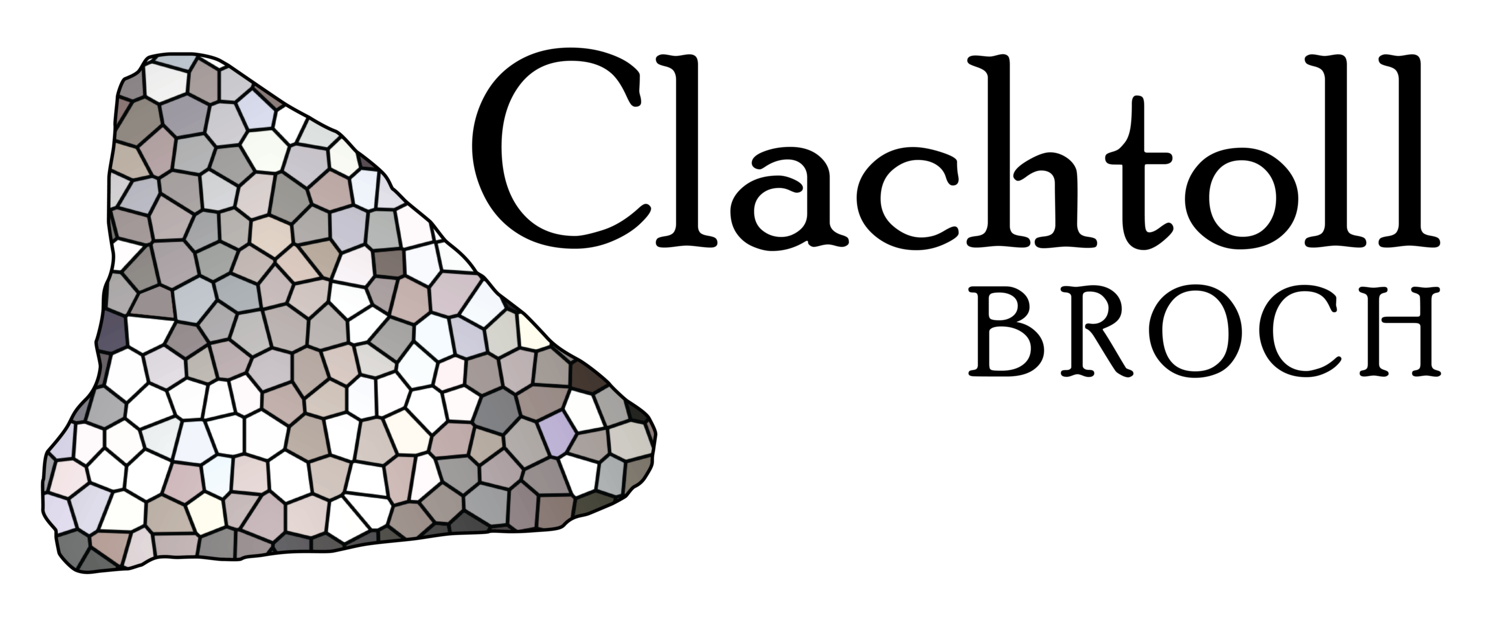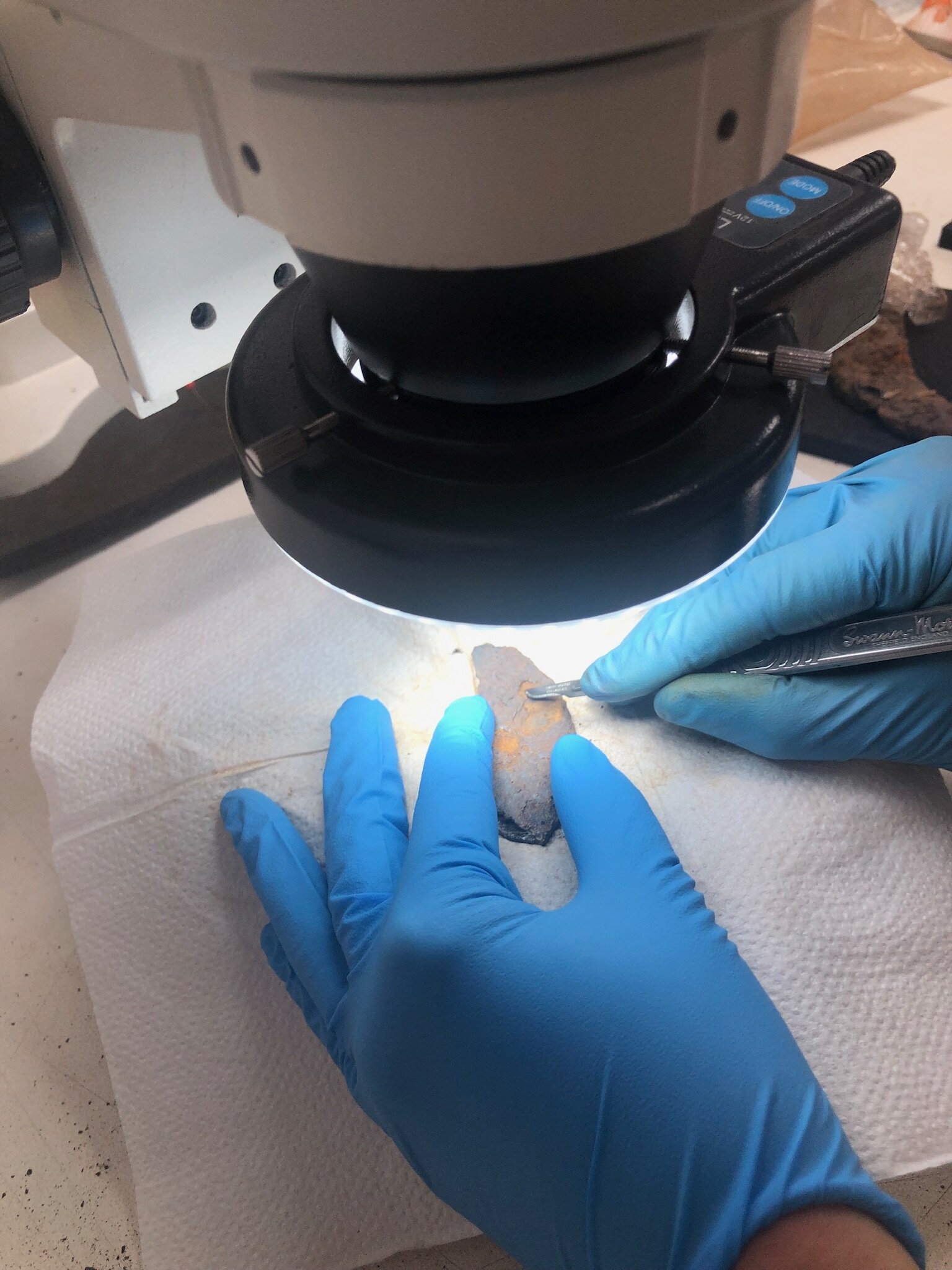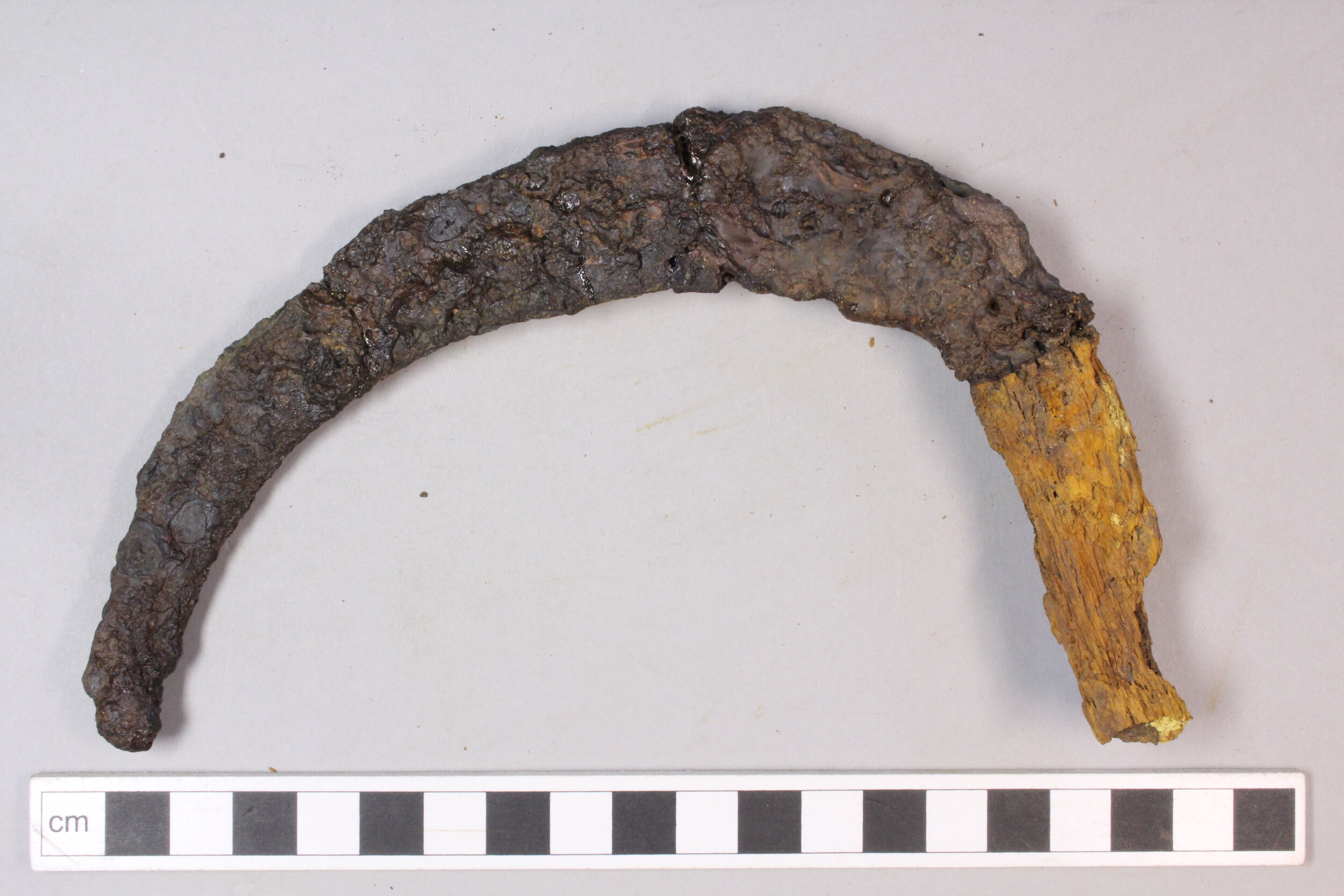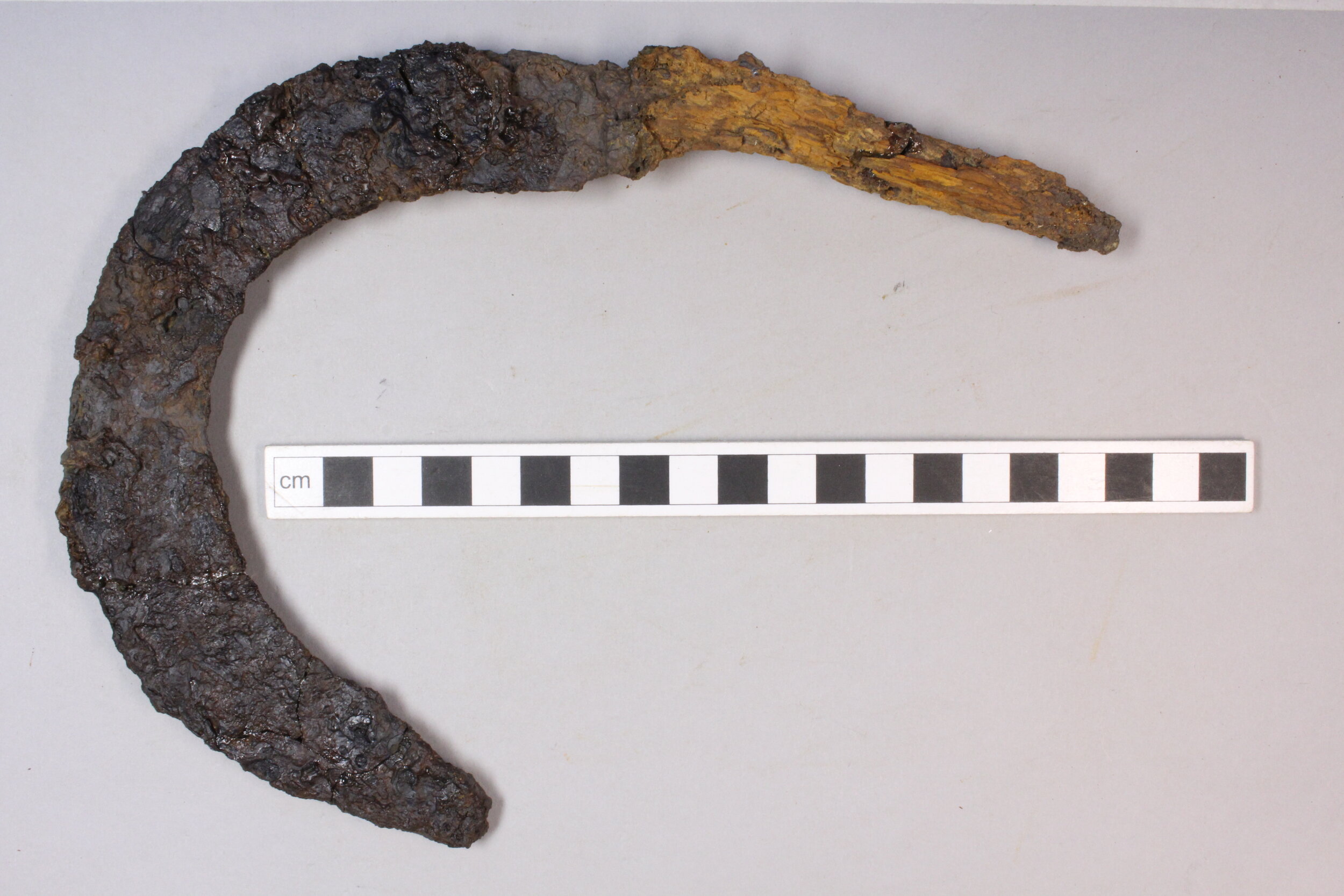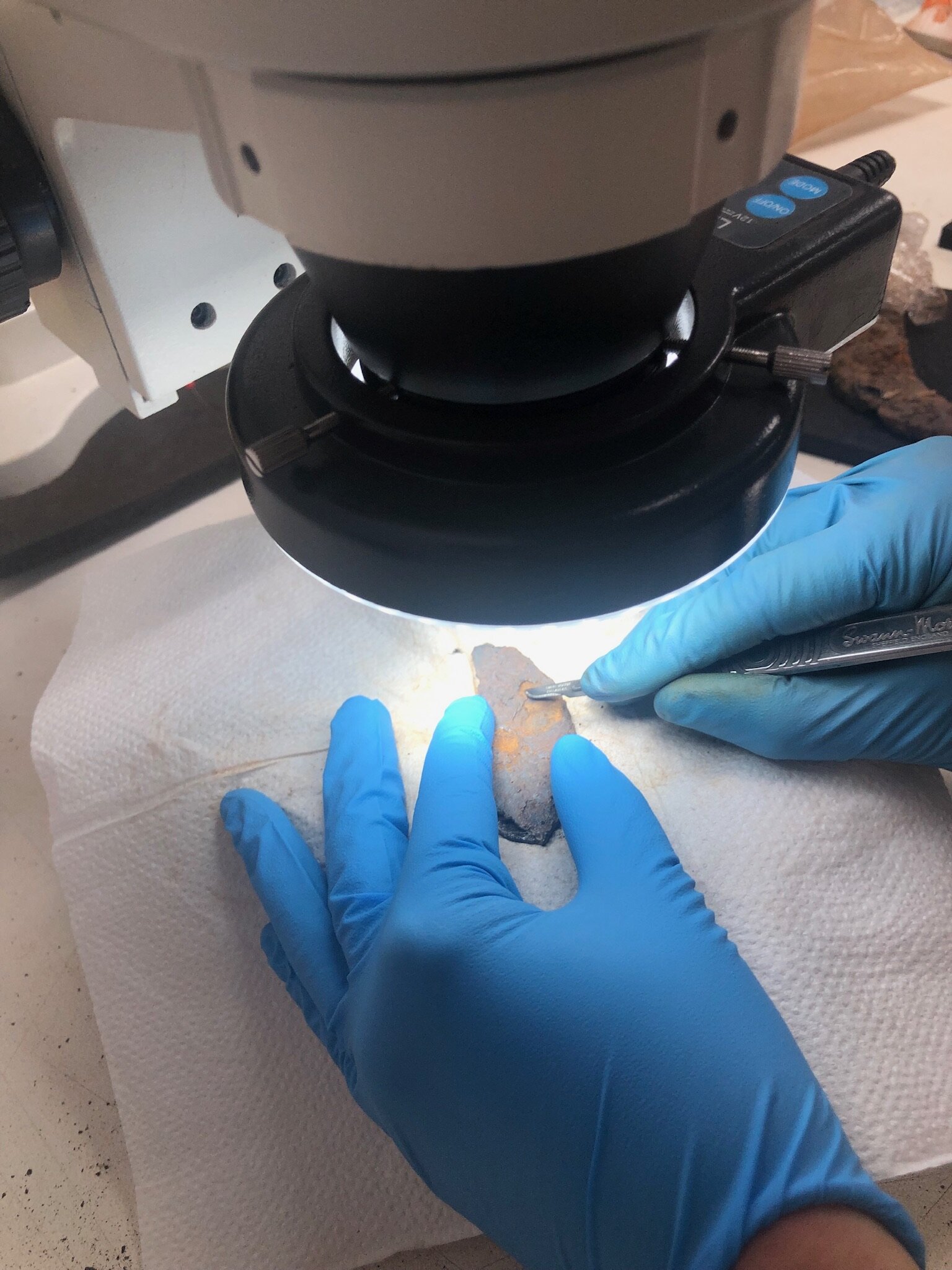
After centuries underground, some of the artefacts needed a little gentle care
Archaeological artefacts often need conservation treatment after excavation to ensure their survival after being removed from the ground. This is particularly true for organic materials such as wood, or metal objects, including iron.
Conservation of the iron finds from Clachtoll was particularly challenging because they were very corroded. Corrosion is caused by chemical reactions between the iron and natural elements from the burial environment such as water, salts, oxygen and even bacteria. This chemical reaction converts the iron into new materials, known as corrosion products. While corrosion forms, it often incorporates other items lying nearby, known as inclusions, into the corrosion. The items from Clachtoll had large inclusions trapped within the outer corrosion layers, turning the artefacts into unidentifiable lumps.
All of the metal finds were x-radiographed as part of the conservation assessment process. This allows the conservator to see through the outer corrosion layers and interpret the object's shape and condition. The conservator can also use the X-radiograph to look for any features of interest such as associated materials, decoration, or manufacturing techniques. Once treatment is underway, the conservator uses the x-ray as a guide when the original shape of the object cannot be seen due to the overlying corrosion.
A conservator works to reveal the shape of a corroded iron object
A scalpel is used to carefully remove corrosion obscuring the object
This object was one of the conservators’ biggest challenges
It was so obscured by corrosion that it could only be identified through an x-ray.
It is a socketed adze with a secondary object stuck to its corrosion layers.
The secondary object appeared to be semi-circular and flat, rather like a broken disc, shown at the right of the image here. It was very thin and fragile compared to the heavy adze. Before work could begin on the adze, the conservator needed to carefully release the secondary object from the corrosion without causing damage to either object.
The conservator used a variety of mechanical methods to do this, including small hand tools and air abrasion (similar in principle to sandblasting, but far more gentle). Once the secondary object had successfully been freed from the surface of the adze, each object could be treated individually.
The corrosion was very hard so cleaning was a slow process and required great patience. Due to many centuries of decay, no true ‘original’ surface exists on these objects, but their overall shape is preserved within the corrosion layers. The conservator worked carefully to reveal the objects and was even able to reveal the shape of the socket on the adze.
The axe after conservation, with the socket clearly visible
Following conservation treatment, the secondary object was identified as a lunate scraper.
Mixed Materials
The iron finds included three reaping hooks with wood preserved on their tangs. This is highly significant because it provides evidence of an original handle.
The preserved wood is soft compared to the iron corrosion and can be easily destroyed by the treatment techniques required to clean the iron blades. Where objects are found to be made of multiple materials, conservators take great care to tailor treatments to ensure that neither material is damaged during conservation. In this case, a protective covering was placed over the wooden areas to ensure it was not damaged whilst the iron corrosion was being removed.
